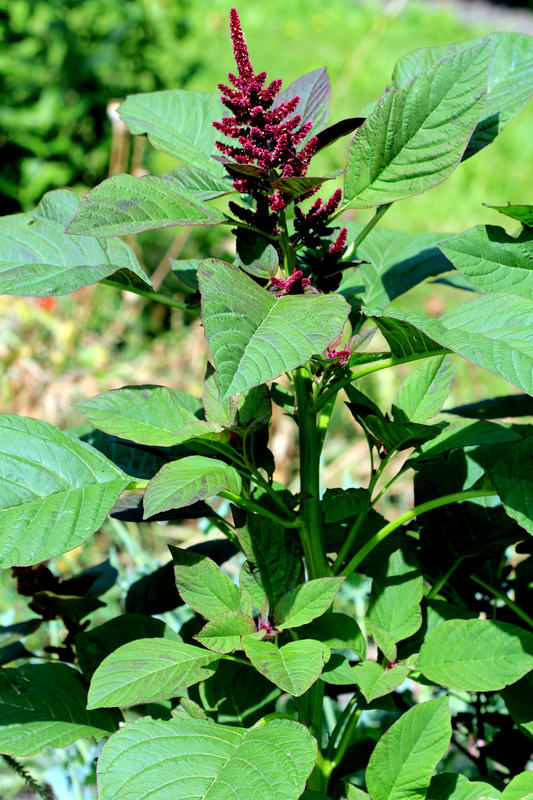Prince-of-Wales Feather, Amaranth, Grain Amaranth
Amaranthus hypochondriacus

🌿 Morphology
🌞 Growing conditions
🌍 Origin and family
🌾 Uses
Warning: Despite the care taken in writing this sheet, it is essential to cross-reference sources before using or consuming any plant. When in doubt, consult a qualified professional
Permaculture uses
The seeds are highly nutritious, gluten-free, and can be eaten raw, cooked, or ground into flour. Young leaves can be eaten as a spinach substitute. Amaranth provides good ground cover, suppressing weeds and improving soil structure. It attracts beneficial insects and can be used as a green manure crop. Some cultivars are grown for ornamental purposes.
Permapeople description
Amaranthus hypochondriacus is an ornamental plant also cultivated as a grain. It is known for its striking red flower spikes.
Botanical description
Amaranthus hypochondriacus is an annual plant belonging to the Amaranthaceae family. It typically grows to a height of 4-8 feet. The plant has a thick, erect stem with broad, oval-shaped leaves. The flowers are small, densely packed in erect, showy panicles that are typically red, purple, or golden. The plant produces small, round seeds that are rich in protein and other nutrients.
Companion planting
Favorable companions include corn, onions, marigolds, and nasturtiums. Avoid planting near sunflowers, as they can compete for resources. Can attract lygus bugs that might affect nearby crops.
Propagation methods
Propagation is primarily by seed. Direct sowing in spring after the last frost is common. Seedlings can also be started indoors and transplanted later. Amaranth self-seeds readily.
History and traditions
Amaranth was a staple food of the Aztecs and other Mesoamerican civilizations. It was used in religious ceremonies and as a source of nutrition. The Spanish conquistadors banned its cultivation in an attempt to suppress indigenous culture. However, amaranth cultivation persisted in remote areas and is now experiencing a resurgence in popularity as a health food.
Usage calendar
Sowing: Spring (after last frost). Flowering: Summer to Fall. Harvesting Seeds: Fall. Harvesting Leaves: Spring to Summer (young leaves).
